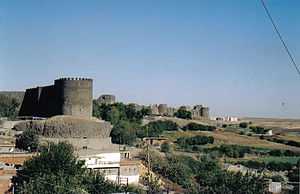359
This article is about the year 359. For the number, see 359 (number).
| Millennium: | 1st millennium |
|---|---|
| Centuries: | 3rd century – 4th century – 5th century |
| Decades: | 320s 330s 340s – 350s – 360s 370s 380s |
| Years: | 356 357 358 – 359 – 360 361 362 |
| 359 by topic | |
| Politics | |
| State leaders – Sovereign states | |
| Birth and death categories | |
| Births – Deaths | |
| Establishment and disestablishment categories | |
| Establishments – Disestablishments | |
| Gregorian calendar | 359 CCCLIX |
| Ab urbe condita | 1112 |
| Assyrian calendar | 5109 |
| Bengali calendar | −234 |
| Berber calendar | 1309 |
| Buddhist calendar | 903 |
| Burmese calendar | −279 |
| Byzantine calendar | 5867–5868 |
| Chinese calendar | 戊午年 (Earth Horse) 3055 or 2995 — to — 己未年 (Earth Goat) 3056 or 2996 |
| Coptic calendar | 75–76 |
| Discordian calendar | 1525 |
| Ethiopian calendar | 351–352 |
| Hebrew calendar | 4119–4120 |
| Hindu calendars | |
| - Vikram Samvat | 415–416 |
| - Shaka Samvat | 281–282 |
| - Kali Yuga | 3460–3461 |
| Holocene calendar | 10359 |
| Iranian calendar | 263 BP – 262 BP |
| Islamic calendar | 271 BH – 270 BH |
| Julian calendar | 359 CCCLIX |
| Korean calendar | 2692 |
| Minguo calendar | 1553 before ROC 民前1553年 |
| Seleucid era | 670/671 AG |
| Thai solar calendar | 901–902 |
| Wikimedia Commons has media related to 359. |

The walls of Amida (Turkey)
Year 359 (CCCLIX) was a common year starting on Friday (link will display the full calendar) of the Julian calendar. At the time, it was known as the Year of the Consulship of Eusebius and Hypatius (or, less frequently, year 1112 Ab urbe condita). The denomination 359 for this year has been used since the early medieval period, when the Anno Domini calendar era became the prevalent method in Europe for naming years.
Events
By place
Roman Empire
- King Shapur II the Great of the Persian Empire invades southern Armenia. The Romans implemented a scorched earth policy and placed strong guards at the Euphrates crossings.
- Siege of Amida: Shapur II besieged the Roman fortress of Amida (modern Diyarbakir). After seventy-three days the city is conquered and the population is massacred by the Persians. Ammianus Marcellinus is a fortunate survivor and flees to Singara (Iraq).
- The first known Prefect of the city of Constantinople, Honoratus, takes office.
- Famine in Upper Rhineland. A fleet of 800 river boats built for the Rhine, crossed to the British east coast and carried back enough corn to raise the famine.[1]
- Winter – Shapur II halts his campaign due to heavy casualties during the Persian invasion.
By topic
Art
- Sarcophagus of Junius Bassus, in the Old St. Peter's Basilica, Vatican, is made (approximate date).
Religion
- July – Emperor Constantius II convenes the Council of Rimini to resolve the crisis over Arianism in the Church. Some 400 bishops of the Western Roman Empire attend, while the Eastern bishops held simultaneously a meeting at Seleucia. Given Saint Jerome's comment that, "The whole world groaned in astonishment to find itself Arian", it appears to have failed. Pope Liberius rejected the new creed at Rimini.
Births
- Flavius Stilicho, Roman general (d. 408)
- Godigisel, king of the Vandals (d. 406)
- Gratian, Roman emperor (d. 383)
- Murong Chong, emperor of Western Yan (d. 386)
Deaths
- Barbatio, Roman general
- Hosius of Corduba, bishop of Córdoba (Spain)
- Junius Bassus, Roman politician
- Zhang Guan, general and regent of Former Liang
References
- ↑ Wheeler M.Inst.C.E, William Henry (1896). A History of the Fens of South Lincolnshire, being a description of the rivers Witham and Welland and their estuary, and an account of the Reclamation, Drainage, and Enclosure of the fens adjacent thereto. (2nd ed.). J.M. Newcombe (Boston), Simpkin, Marshall & Co. (London). p. 5. doi:10.1680/ahotfosl2e.50358.